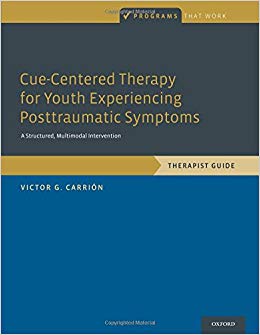
Cue-Centered Therapy for Youth Experiencing Posttraumatic Symptoms presents a psychosocial treatment approach for children and adolescents who have been exposed to chronic traumatic experiences. Cue-Centered Therapy (CCT) derives its name from its focus on the conditioning process that results in sensitivity towards trauma-related cues. CCT addresses four core domains: cognition, behavior, emotions, and physiology, through a combination of empirically supported and CCT-specific interventions. This structured and flexible Therapist Guide focuses on helping the youth develop insight into his/her own patterns of behaviors and emotions. Rather than having youth attempt to "unlearn" maladaptive responses conditioned to cues, CCT focuses on creating new connections and behavioral responses. The treatment manual offers guidelines on conducting each of the sessions while respecting the individual therapist’s own strengths. Through the use of visual icons, forms, and figures, the manual facilitates teaching relevant lessons. The therapy reduces negative cognitions, allows for emotional expression, identifies and changes trauma-related responses, empowers with knowledge and skills, and strengthens the relationship between the caregiver and his/her child.

